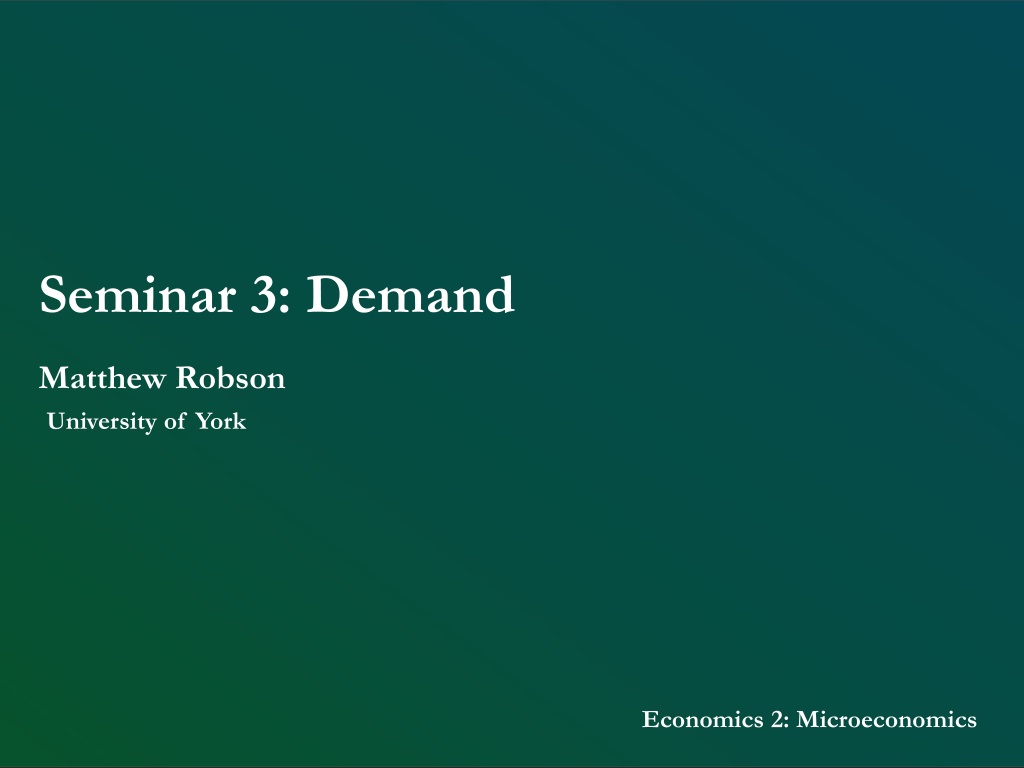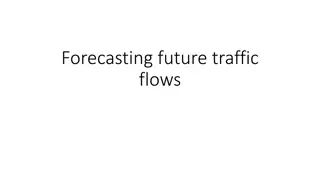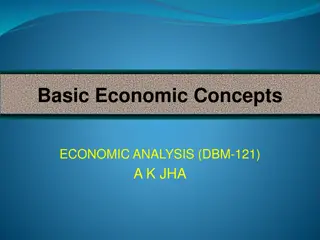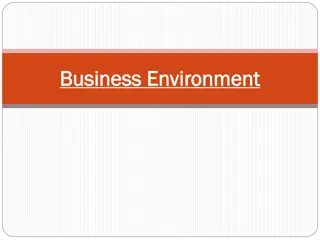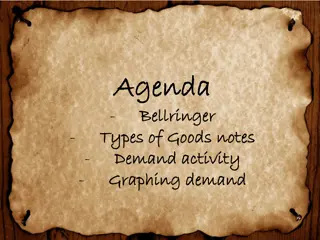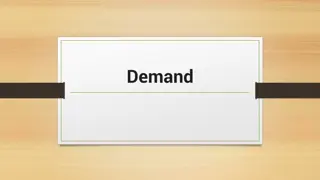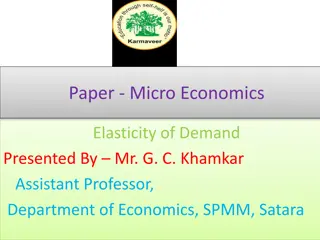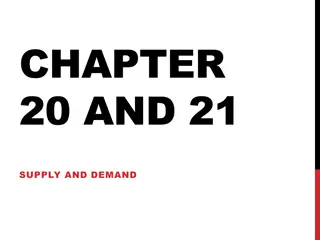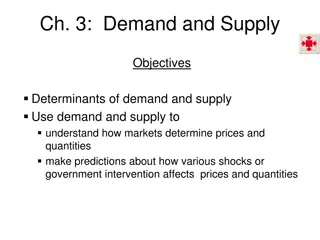Microeconomics: Goods Classification and Demand Analysis
Explore the concepts of normal goods, inferior goods, and Giffen goods in microeconomics. Understand consumer behavior based on income changes and price effects. Analyze demand patterns through real-life examples and scenarios.
Download Presentation

Please find below an Image/Link to download the presentation.
The content on the website is provided AS IS for your information and personal use only. It may not be sold, licensed, or shared on other websites without obtaining consent from the author. Download presentation by click this link. If you encounter any issues during the download, it is possible that the publisher has removed the file from their server.
E N D
Presentation Transcript
Seminar 3: Demand Matthew Robson University of York Economics 2: Microeconomics 1
Question 1 Define a normal good and an inferior good. Describe two goods of each. Explain why you classified these goods as normal or inferior. If your income doubled how would your consumption of these goods change? Normal Good. A good that is normally related in the eyes of the consumer to income: if a consumer receives more income she will consume more of a normal good. Examples: holidays, high quality food, fashionable clothing. Inferior Good. A good that is perceived as inferior (to some closely related good) by the consumer: if a consumer receives more income he will consume less of an inferior good (because he can now afford normal goods as substitutes). Examples: spam, very cheap poor quality clothing, living in a hut. 2
Question 2 Maria spends her entire income on two goods which are apples and bread. Apples are a giffen good. If the prices of apples rise and the price of bread stays the same, what will happen to Maria s demand for bread? Explain. The total effect on demand for apples of a price change is the substitution effect plus the income effect. The substitution effect on apples is negative. While the income effect on apples is positive. 3
Question 2 As shown, the demand for apples rises With both income and the prices of bread fixed The demand for bread must fall! Increase in ??. Normal, Inferior or Giffen? (Slutsky Equation) = + ?? ??? ??? Normal -ve = -ve + -ve Inferior ? = -ve + +ve Giffen +ve = -ve + +ve 8
Question 3 You are given the following partial information about John s purchases. He consumes only two goods: Year 1 Year 2 Quantity 100 100 Price 100 100 Quantity 120 150 Price 100 80 Good 1 Good 2 9
Question 3a) Define the Weak Axiom of Revealed Preference (WARP) If A and B are feasible but A is chosen, then at any prices and income where A and B are feasible, the consumer will choose A over B WARP tells us that people choose what they prefer and that preferences are consistent. It allows us to infer preferences from a single observed choice. 10
Question 3b) Are there any violations of WARP? Create new table which shows expenditure for each bundle, at the two different price sets, use stars to denote lower expenditure. Year 1 Year 2 Quantity 100 100 Price 100 100 Quantity 120 150 Price 100 80 Good 1 Good 2 Is B1 RP to B2? No, B2 is not affordable Bundle 1 2 Is B2 RP to B1? Yes, B2 is chosen but B1 is affordable There are no violations as B2 is RP to B1, but not vice versa. 100*100 + 100*100 = 20,000 100*100 + 100*80 = 18,000* 120*100 + 150*100 = 27,000 120*100 +150*80 = 24,000 1 Price 2 11
Question 3b) 12
Question 3b) 13
Question 3c) Imagine that the quantity of Good 2 consumed in Year 2 in unknown. Calculate over what range of quantities of Good 2 consumed in Year 2 you could conclude that John s purchases are inconsistent (i.e. violate WARP). Bundle 1 2 100*100 + 100*100 = 20,000 100*100 + 100*80 = 18,000* 1 120*100 + x2*100 Price 2 120*100 +x2*80 Bundle 1 is RP to Bundle 2 if 12000 + ?2 100 20000: ?2 80 Bundle 2 is RP to Bundle 1 if 18000 12000 + ?2 80: ?2 75 Inconsistency exists therefore if 75 ?2 80 14
Question 3c) 15
